2008 Porsche Cayenne GTS – Click above for high-res image gallery
Porsche makes sports cars backed by a rich tradition and race history. The thought of something wearing the badge that's also able to cart around your family and a load of their assorted junk was once laughable. Today, of course, that thought manifests itself in the form of the Porsche Cayenne. Even now, the idea of the Porsche SUV still seems wrong. Sure, the red Cayenne GTS in the Autoblog Garage has a spec sheet that looks exciting on paper. 405 V8-sourced horses and that shield on the hood makes you almost forget the five doors and 4,900 pounds that fill out the rest of the package. Read on to find out how the 2008 Porsche Cayenne GTS fared as a family hauler during a quick vacation up the coast.
Photos Copyright ©2008 Alex Nunez / Weblogs, Inc.
The base V6 Cayenne and V8-powered Cayenne S look as if they're grinning at some inside joke, while the GTS and two Turbo models share an angrier visage (the expression is similar to one you might see on a tiki souvenir in a Hawaiian airport gift shop). Either way, the Cayenne isn't pretty, but the more agitated face of the GTS is an improvement over the base models, and it instantly communicates the muscular nature of the 4.8L V8 that sits behind it.
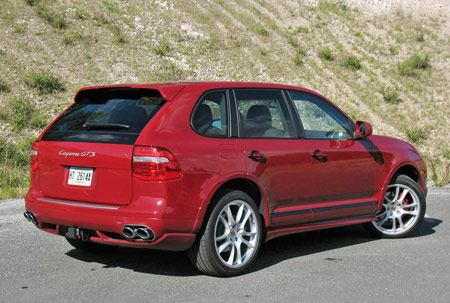
While the Turbo and Turbo S have metallic accents, the GTS does away with said fanfare, instead blacking out that trim on the door handles, around the windows and elsewhere on the exterior. It makes for a monochromatic presentation that's more understated than the approach taken by its glitzier cousins, the VW Touareg and Audi Q7, despite the fact that Porsche is the highest-profile brand of the three. Immense 21-inch wheels wrapped in steamroller-sized performance rubber leave no doubt as to the mission statement.
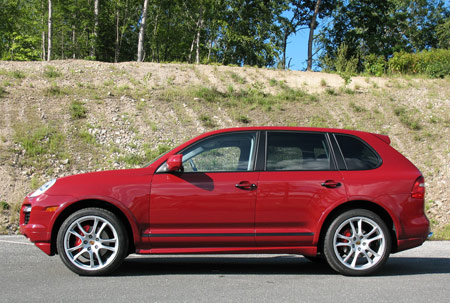
Porsche made the GTS the most street-oriented Cayenne in the range, so it sits lower than even the Turbo. Color-keyed sill extensions further enhance that visual impression. The rear liftgate is topped by a spoiler and angled to give the Cayenne a faster-looking profile. While this is in keeping with Porsche's performance image, it creates a problem when you're loading up the cargo bay with luggage, beach chairs, toys, a stroller and the other assorted bits of family life that people with young kids need to bring on vacation.
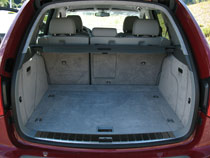

There's only 19.1 cubic feet back there. Frankly, I thought I was screwed, as did my wife who took one look at the cargo area and said, "There's no way you're fitting all this stuff. We may need to leave the stroller." There was no way we were leaving that stroller and we didn't want to block rear visibility unless it was absolutely essential. After trying a few packing-order combos, we got everything in without obstructing the rear window at all. The Cayenne wound up swallowing an impressive amount of stuff in what's really not a lot of usable space. We were impressed.
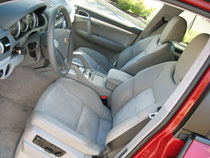

The Cayenne's main passenger compartment isn't overly spacious. Think Jeep Grand Cherokee dimensionally minus an inch or two here and there. As such, headroom, legroom and the like are all pretty average. Our tester was finished in a stone grey leather-and-Alcantara combo, with pseudo suede trimming the main seating surfaces in both the front and back seats. Comfy and grippy, yes, but we lived in fear that some unnaturally-colored beverage would find its way from the kids' hands to the light-colored Alcantara.
The front seats are a nice, well-bolstered place to be, particularly if you have to drive for hours at a time. My wife commented more than once on how comfortable the accommodations were – surprising given that the Cayenne, as mentioned earlier, has roominess that's pretty much on par with other 5-seat SUVs. I took it as a reminder of how important a quality seat is to the overall experience, be it as driver or passenger.
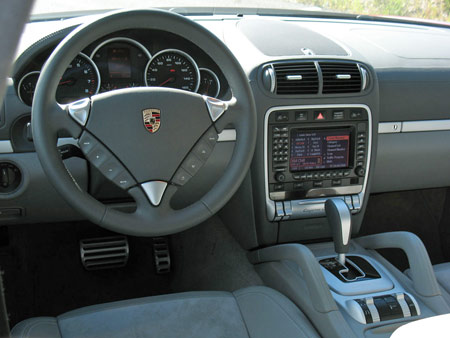
Porsche's instrument panel layout in the Cayenne is pretty simple and straightforward. The driver's instrumentation is easily legible, with a multifunction display positioned between the speedometer and tach. Multifunction controls adorn the steering wheel, ranging from radio tuning and volume to the Tiptronic rockers positioned a thumb's reach away when your hands are at three- and nine-o'clock. All the other critical stuff is located in the center stack and console area.
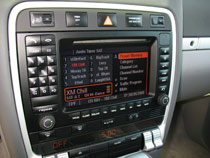

The optional Porsche Communication Management (PCM) system – Porsche's screen-based, button-happy, do-it-all info/audio interface – was the focal point of this test vehicle's center stack. Apparently a product of Zuffenhausen's psychological warfare division, PCM, which has its own separate 200-page manual in the glovebox, does nothing to diminish the sentiment that German engineers are seriously overthinking the best way to find a radio station or adjust a nav destination. In effect, they outsmart themselves and drivers in the process.
Entering our hotel into the navigation system proved to be a source of frustration. No, we didn't look at the manual beforehand – this stuff should be extremely intuitive. After five minutes of fussing with PCM, I told my wife to use our TomTom. She had never, ever used the thing before; we had a route 30 seconds later. Just saying. In fairness to Porsche, it seems they also knew that PCM was imperfect, as they've introduced a brand-new touchscreen version for 2009. Moving on, the Cayenne's climate controls are straightforward and can be hidden under a roll-back cover for a cleaner appearance.
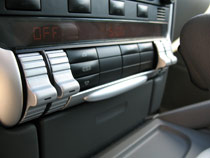
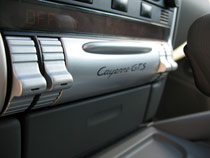
The center console is where you'll find the shifter (Tiptronic S in this case, but you can also order a manual in the GTS) and the controls for the suspension and Sport mode. The big Sport mode button is prominently located in the middle, and you can manually choose between three different suspension modes (Comfort, Normal, and Sport) on the right. Finally, the switch that bookends the assembly allows the driver to manually adjust the air suspension's ride height. For our purposes, we focused on the suspension modes and the Sport setting -- off-roading, or anything remotely resembling it, was not in the cards. After all, we were simply using the Cayenne as a big, muscular station wagon.
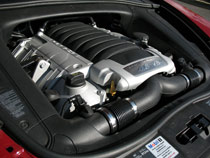
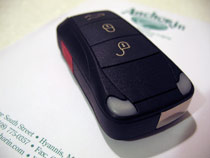
Flip the switchblade key out of its Cayenne-shaped fob (seriously – look at the photo), stick it into the left-mounted (of course) ignition switch and turn to summon the 4.8-liter V8 and its 405 horsepower. Out back, a mild burble emanates from the double-barreled tips peeking through the rear bumper. Don't worry – in Sport mode the exhaust discovers its machismo and blats out a more fiendish, guttural rasp.
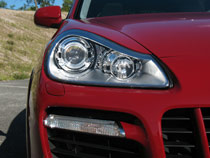
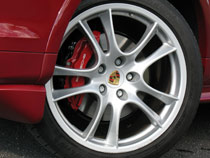

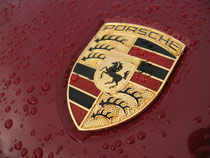
The Cayenne is more than happy to mosey around like any other modern-day family truckster. Just leave it in Drive and it will launch in second gear, ready to tackle whatever grocery-getter tedium is thrown its way. Oh, the power's still there – jump on the gas and the Cayenne snaps right to attention, but it'll revert back to its domesticated-animal form without any prodding. We kept the suspension setting in Comfort mode much of the time, and it seemed to dampen the effects of road imperfections better than the also-perfectly-adequate Normal mode. Considering the aggressive wheel/tire package fitted to the GTS, this winds up being a good thing either way. We expected the ride to be harsher than it actually turned out to be. Bottom line: the Cayenne GTS is perfectly happy to be perfectly boring when the situation calls for that.
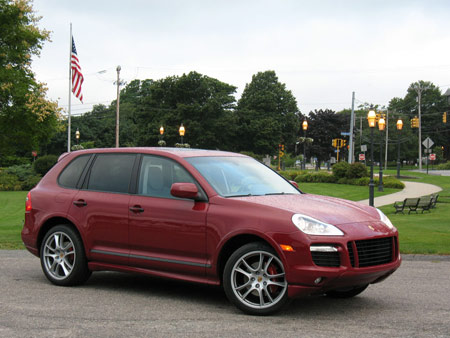
Now that we all understand that the Cayenne GTS is adept at pretending to be an $88,000 minivan, it's still a Porsche and will happily behave like one when asked. Encouraging it to do so is simple: press the Sport button. Those second-gear starts become a distant memory, the muted exhaust note gives way to something far more becoming of a 405-horsepower sports truck, and the GTS becomes more responsive to the orders issued by your right foot. If it's your thing, you can manually shift using the Tiptronic, but the wheel-mounted shift buttons don't add a whole lot of fun to the process. It doesn't matter anyway. In automatic mode, it gleefully rockets forward on command – power is prodigious and omnipresent.
The Cayenne GTS is plenty fast, as well it should be. It's composed, too – body roll is remarkably controlled despite its hefty curb weight. The average, everyday driver (raises hand) wheeling a Cayenne GTS will likely never come close to the handling limits that Porsche has engineered into this SUV. Mostly, you'll just have good, clean fun while devouring long, curved on-ramps under power and tackling your favorite local driving roads on the weekends. The major difference is that with the Cayenne, you can bring Mom and the kids along to share in your weekly motoring catharsis. Maybe even Fido, too.
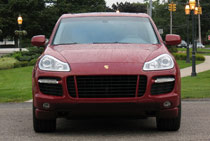
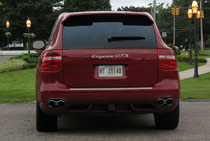
We also managed to get in some unplanned sloppy-weather testing thanks to a fairly wicked storm system during the drive back home from our quick vacation. Monsoon-like rain and hail pelted the GTS as we cruised toward the family HQ on the interstate. There was abundant pooling along both shoulders and it was pretty deep in spots. The Cayenne just motored through, undeterred and sure-footed. It never felt dicey, no matter how miserable the conditions – a very nice, confidence-inspiring bonus.
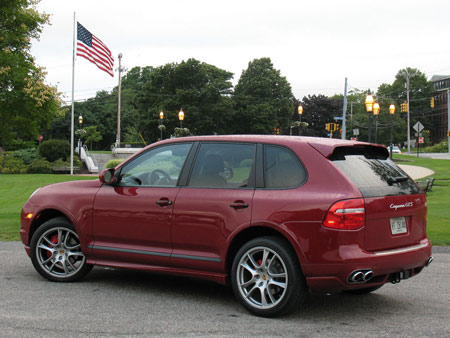
In all honesty, I was one of those people who never "got" the Cayenne. Sure, I understood why Porsche made it, and now it's impossible to dispute this SUV's importance to the corporate bottom line. But how good could it really be? It's expensive, it chugs gas and is not pretty. It's also damned good, despite all the reasons you think it shouldn't be. You may not like the Cayenne, but go try one and you'll get why the folks who drive them do. After several days behind the wheel, I finally understood.
Photos Copyright ©2008 Alex Nunez / Weblogs, Inc.
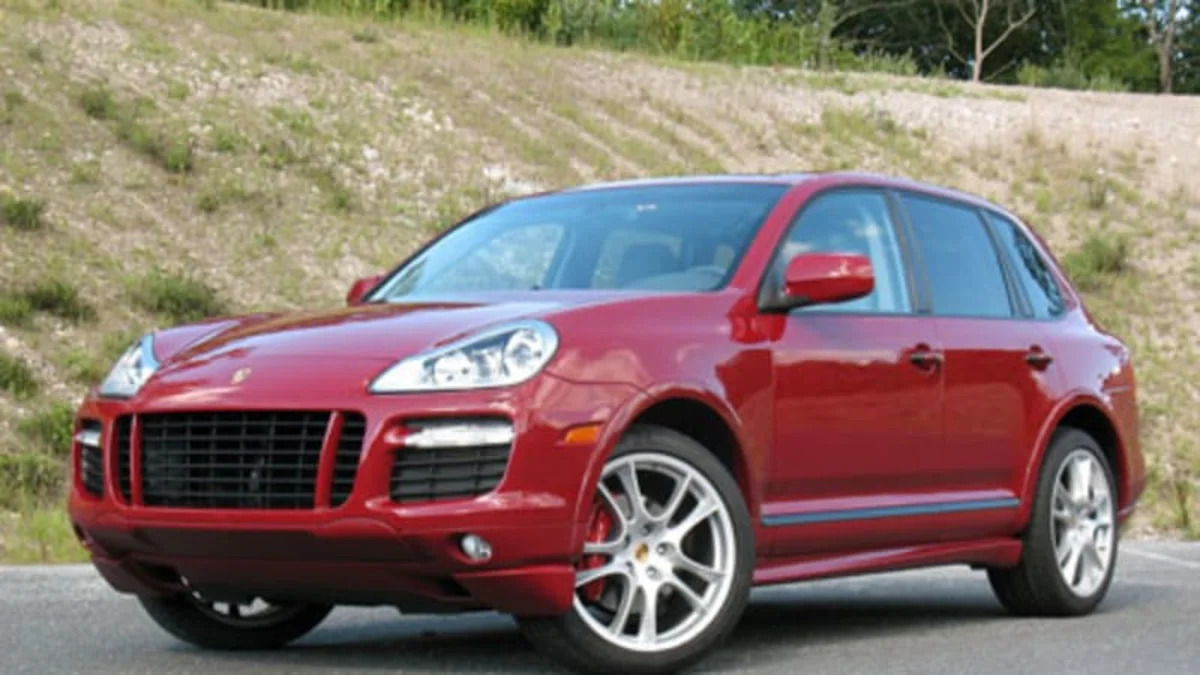
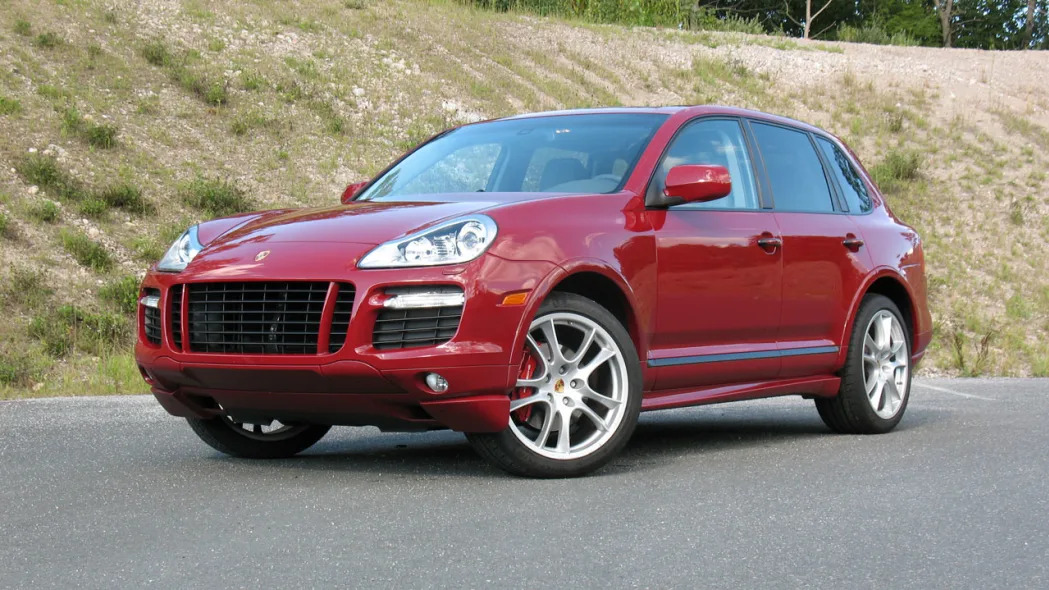

Sign in to post
Please sign in to leave a comment.
Continue